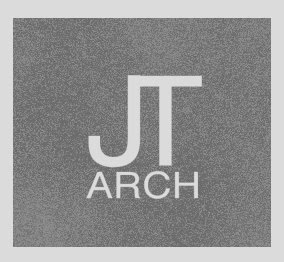Paris has a lot more to offer than in years past, with new developments sprouting up everywhere. Big name architects can be found almost anywhere in the city and perhaps the biggest currently is the native French-man, Jean Nouvel. As one of my favorite architects, I was looking forward to seeing the Cartier Foundation because of the stance it took on preserving the surrounding nature. When walking on the sidewalk, you are greeted with building after building running right up to the sidewalk until you get a glimpse of trees sticking through a glass wall, thats when you know you are there. Once you pass through the single free-standing curtain wall that joins the sidewalk, you enter back into nature before the actual building itself. The gallery is surrounded by trees that are actually framed between the two walls. Staircases on the outside preserve two of the larger trees on site and make nature part of the architecture itself. The feeling of being outside of the city while right in the middle of it is a hard emotion to achieve and this building nails it. Of course, they had to be changing exhibitions at the time and we were not allowed on the grounds. I still found my way on and was able to get at least a couple of pictures before I was asked to leave. Getting kicked out of one of your favorite buildings at least makes for an interesting story.
 |
| Cartier Foundation by Jean Nouvel |
Of course you can't just travel to Paris without seeing any of the long talked about landmarks that made the city what it is today. Walking on the steps of Notre Dame and standing around in a large group just to see the Mona Lisa are experiences that cannot be missed. Of course, Paris wouldn't feel right without a trip to the Eiffel Tower, something I had the pleasure of doing at night as well as the day. The tower can be seen from many places all around the city, but you really don't get a feel for it until you are right there beside it. A group of us were able to sit outside a small restaurant nearby and just watch the light show it put on at the top of every hour, a dazzling display that lights up the night and is just something you don't get a chance to see everyday. The day after this was when we decided to actually up up to the second level and get a different view of Paris. Now you do have to wait and pay a little more to ride the elevator and looking back on it, that might be well worth it in the grand scheme of things. We had the brilliant idea of going up six-hundred steps an a rain soaked afternoon. Six-hundred going up, five ninety-seven on the way down...slippery when wet.
 |
| Eiffel Tower, Paris |
Of course getting to the Eiffel Tower can be a bit of a tough test due to the large amount of street salesman who will try anything in their power to get you to buy their wares. You pretty much cannot move under the tower without being approached by one of these guys who sell mini replicas of the towers and toys to catch peoples eyes. It almost comical to see how these people work and how many people they hit by throwing toy planes and balls into the air. But they are prepared, the moment the rain starts to fall, they pull out umbrellas from no where and try to hand them to you...even if you are currently using one. We have been really lucky at avoiding the beggars so far, they really were not a problem here and hopefully it stays that way.
I should take a moment to mention some of the places we visited before Paris, specifically in Ronchamp, where Le Corbusier has his famous chapel. Now I have to say, looking at pictures, I was never really a big fan of this building, but it was a rather pleasant experience. The pilgrimage church is a bit of a breakaway from Corbusier's five points and quickly evident from the sharp angles and curves. The highlight is the massive roof structure, that looks heavier than it actually is, and appears to rest on glass, giving it a floating look, symbolic of resting on faith. The chapel on the outside plays host to large crowds every year while the smaller one of the inside is used year round. This is a lot different than the Villa Sayove by Corbusier, which we visited the day after, becuase it is an attempt to prove that he could step outside the box and expand on the five points without compromising them.
Notre Dame du Haut by Le Corbusier |



















